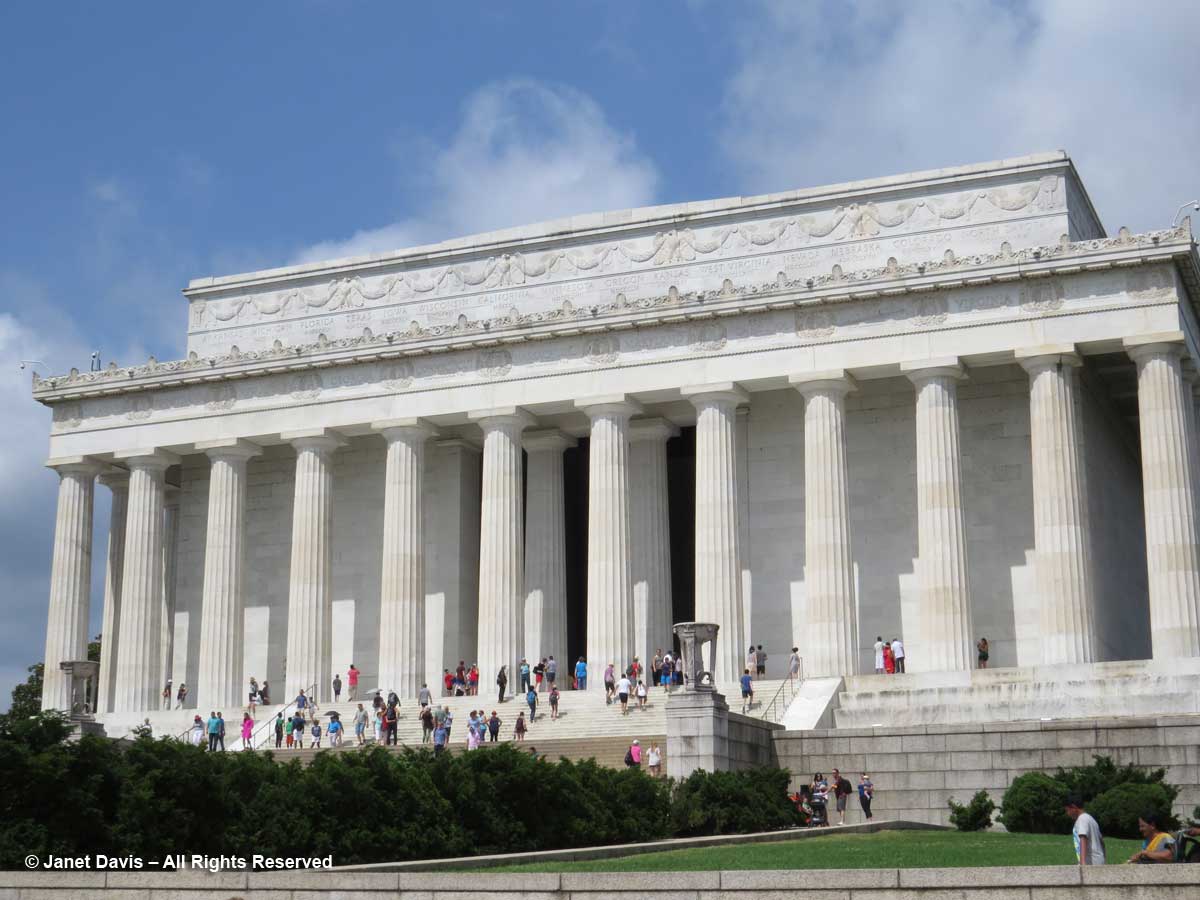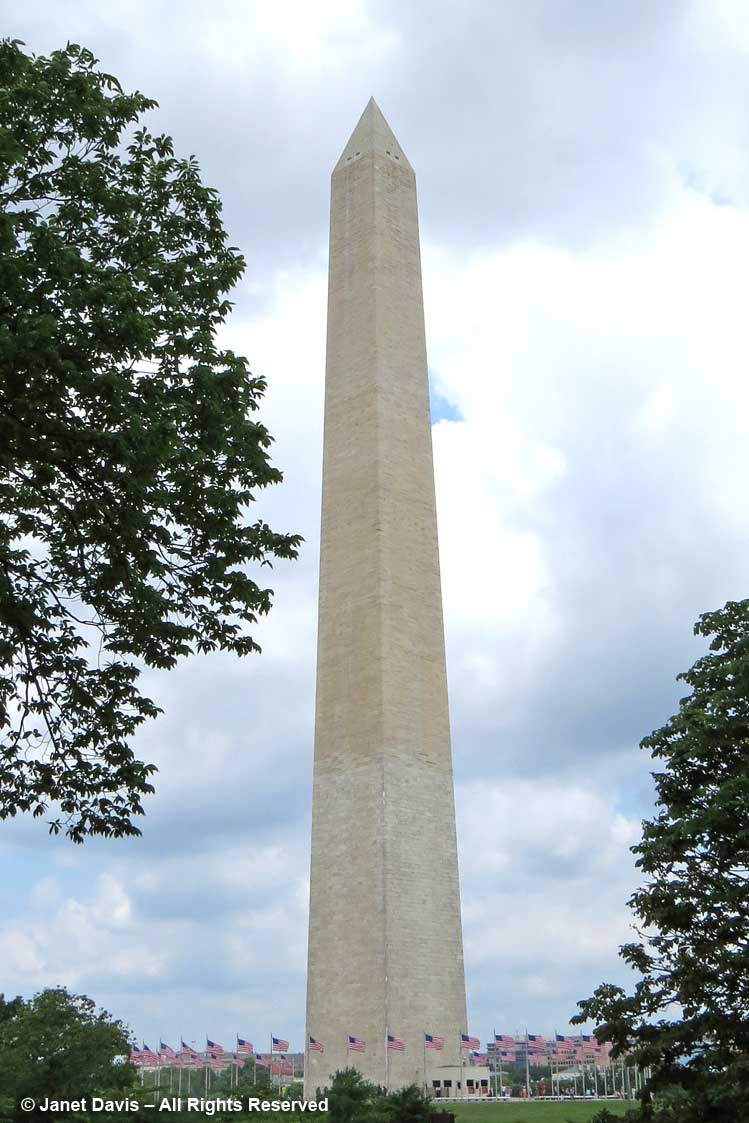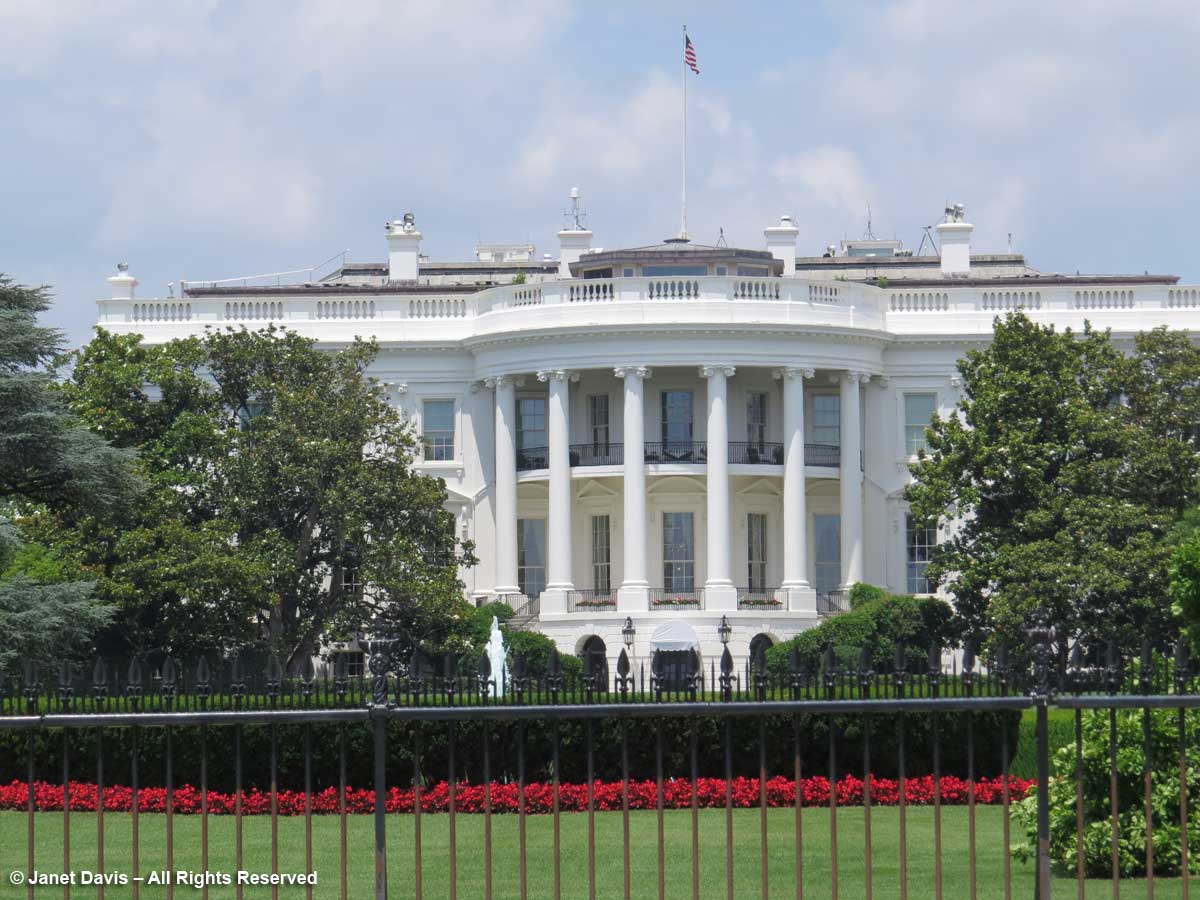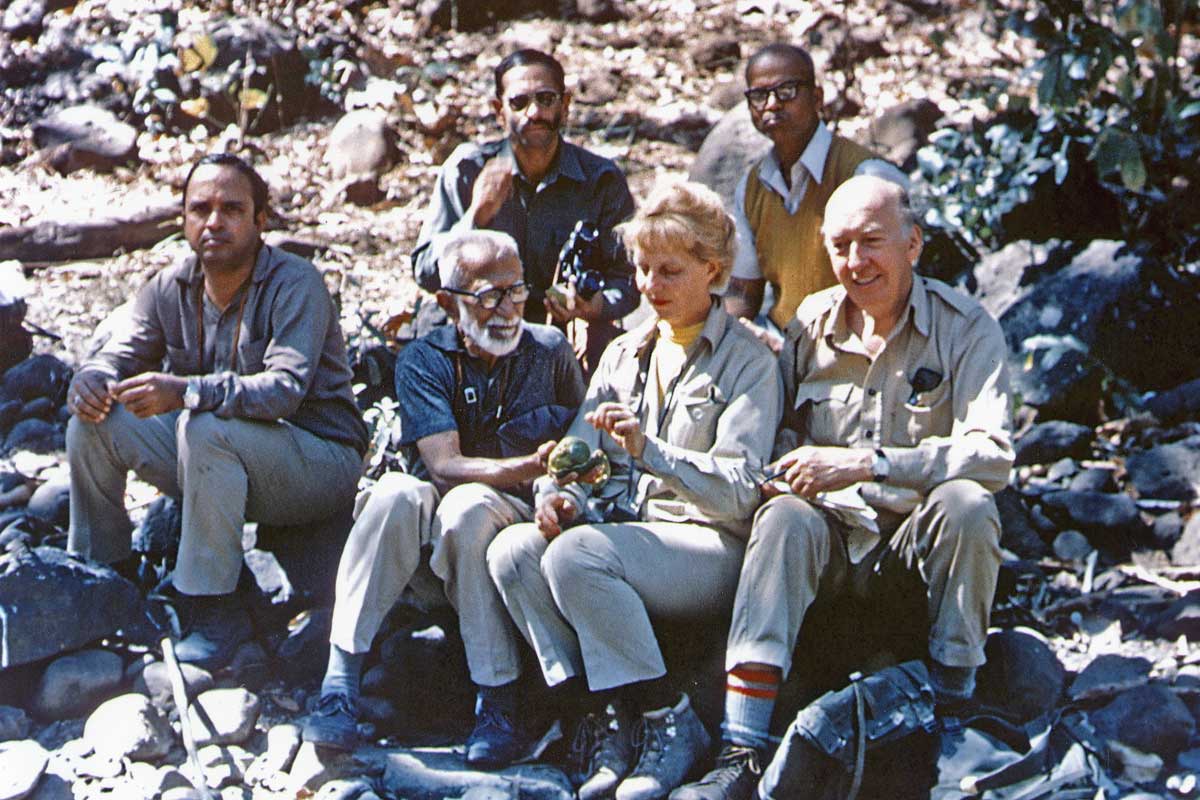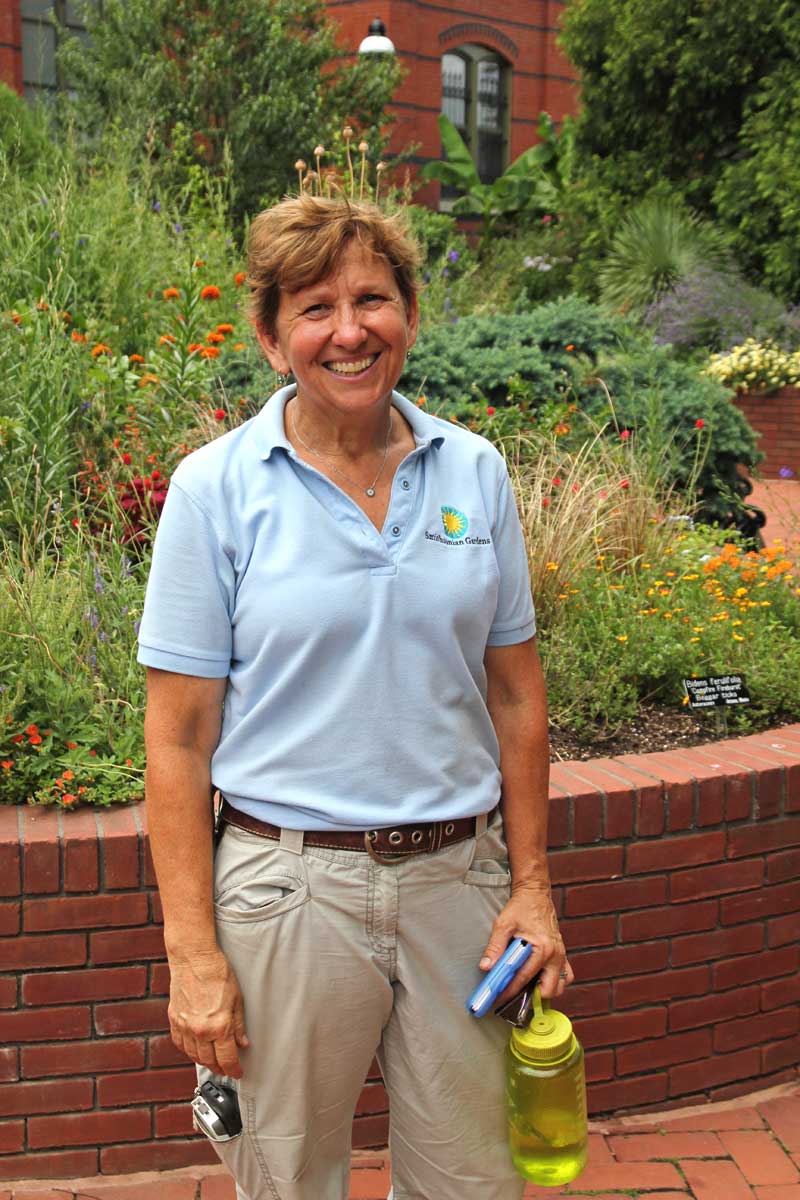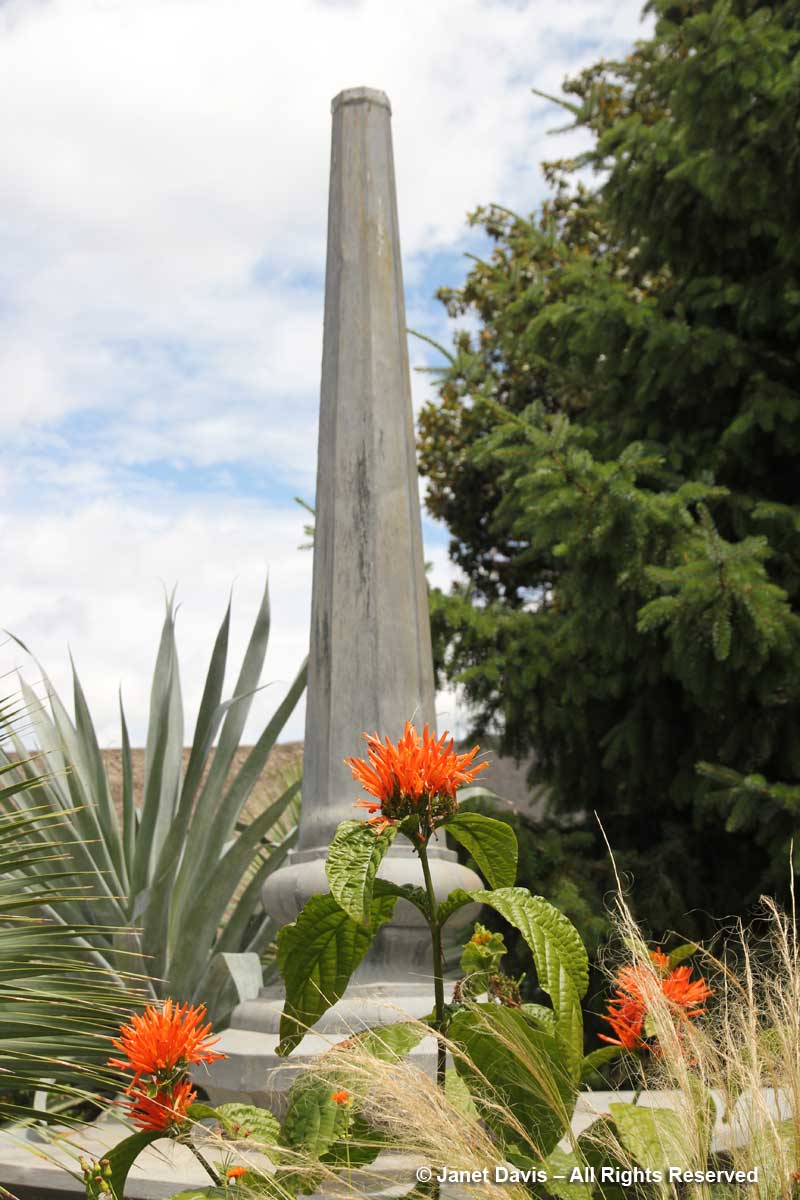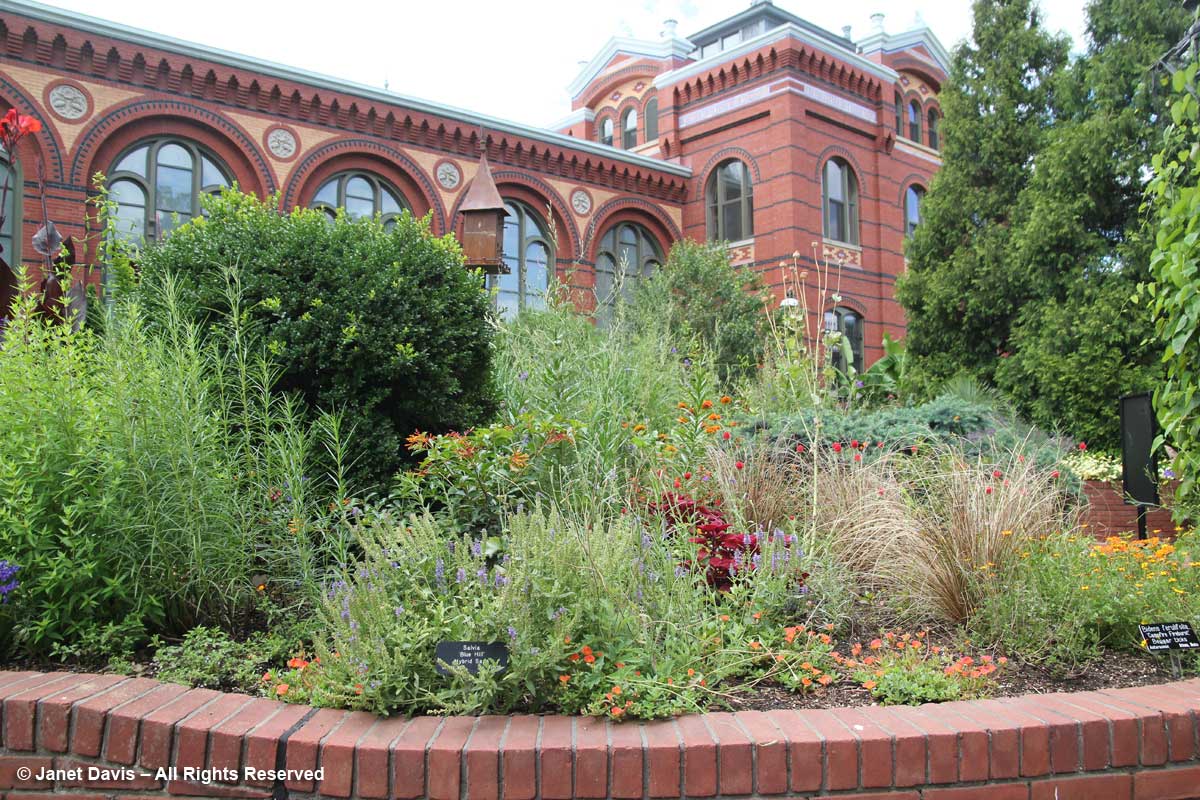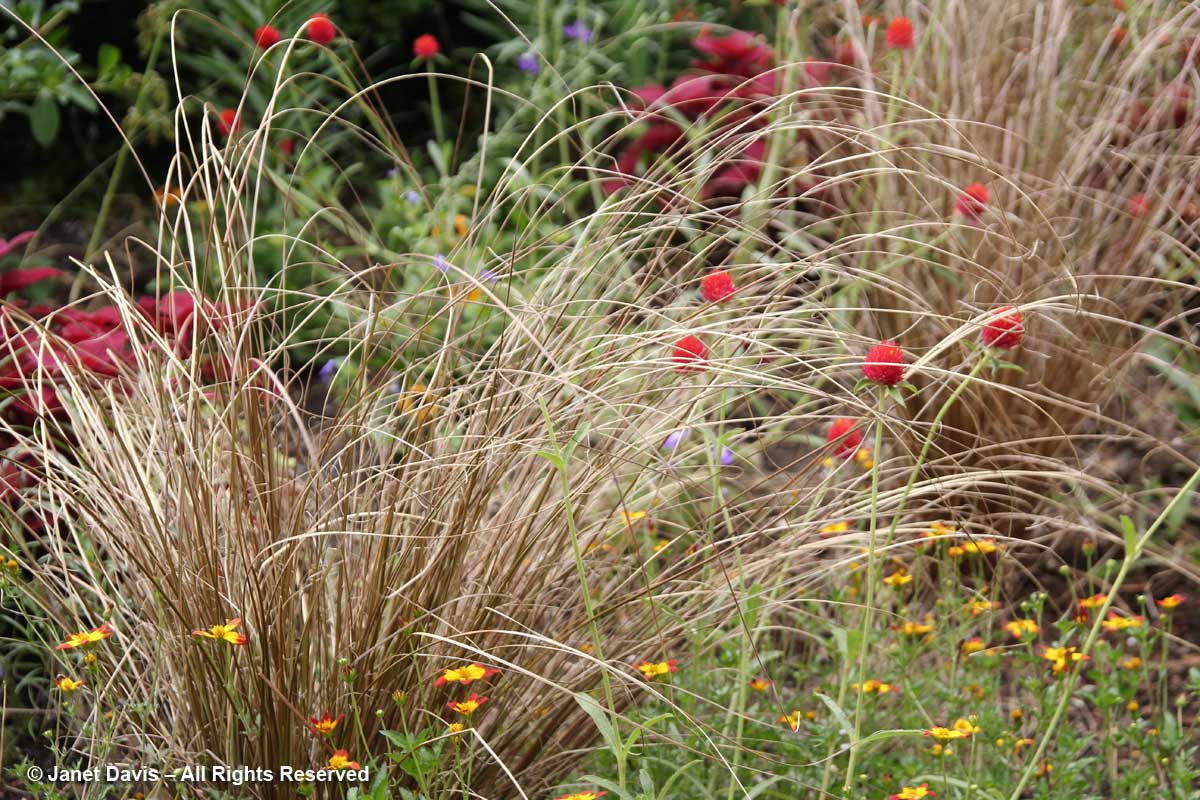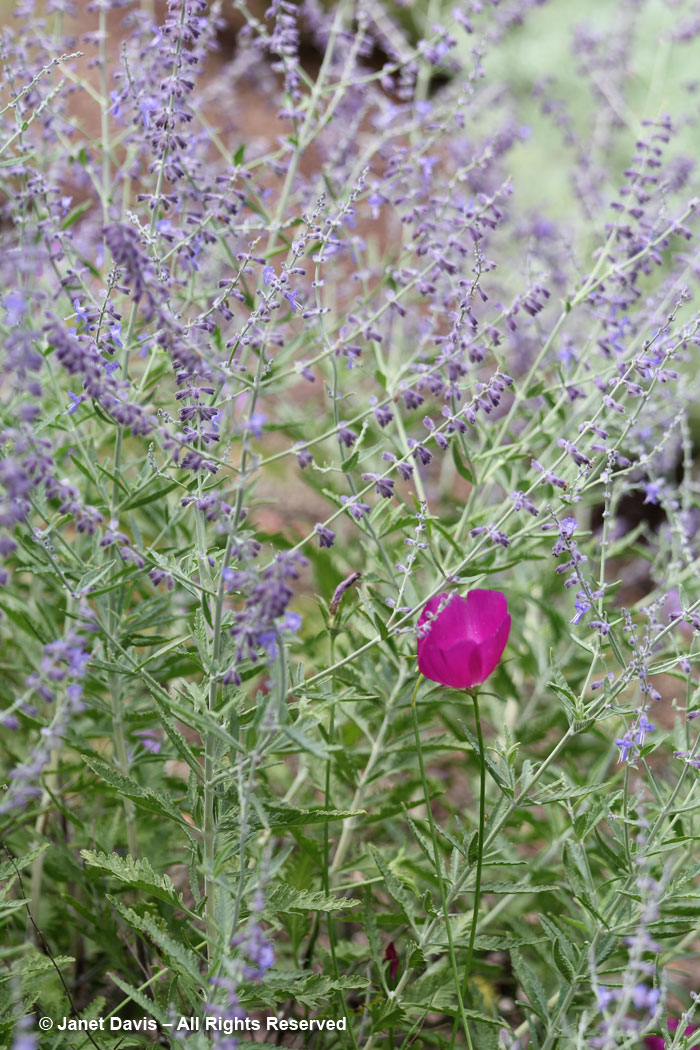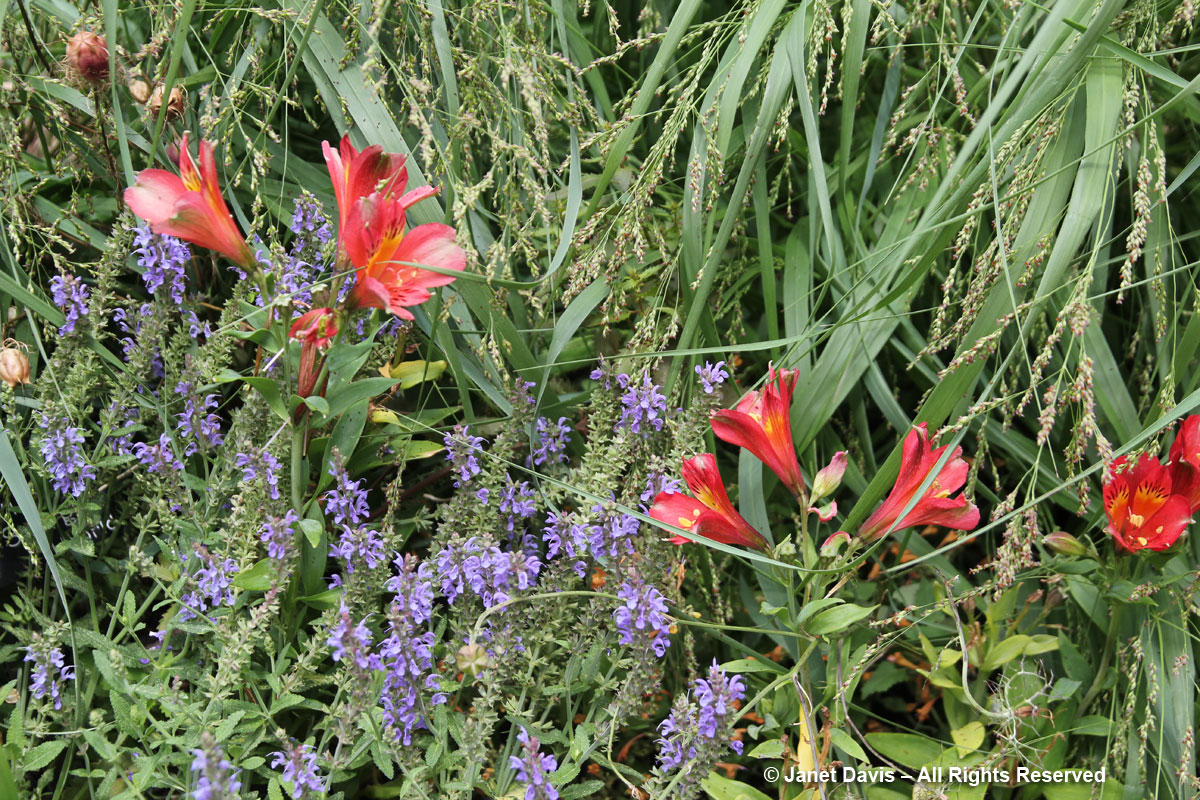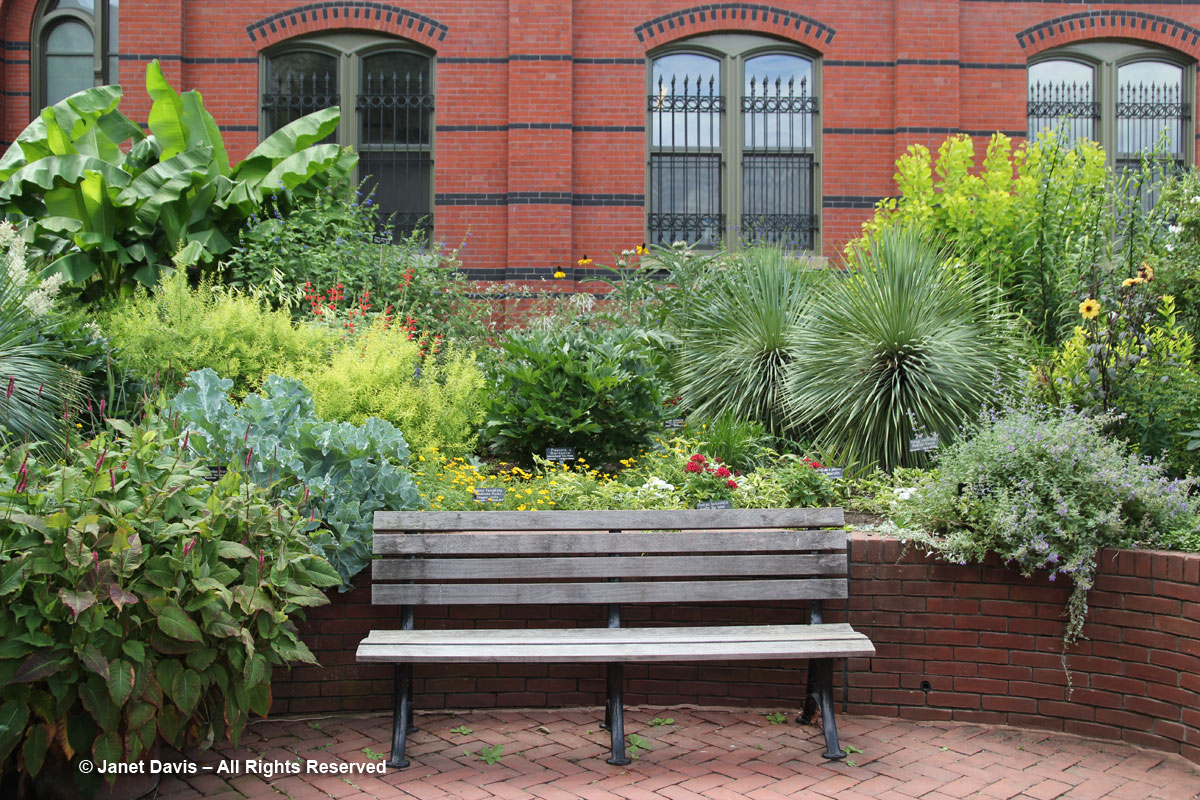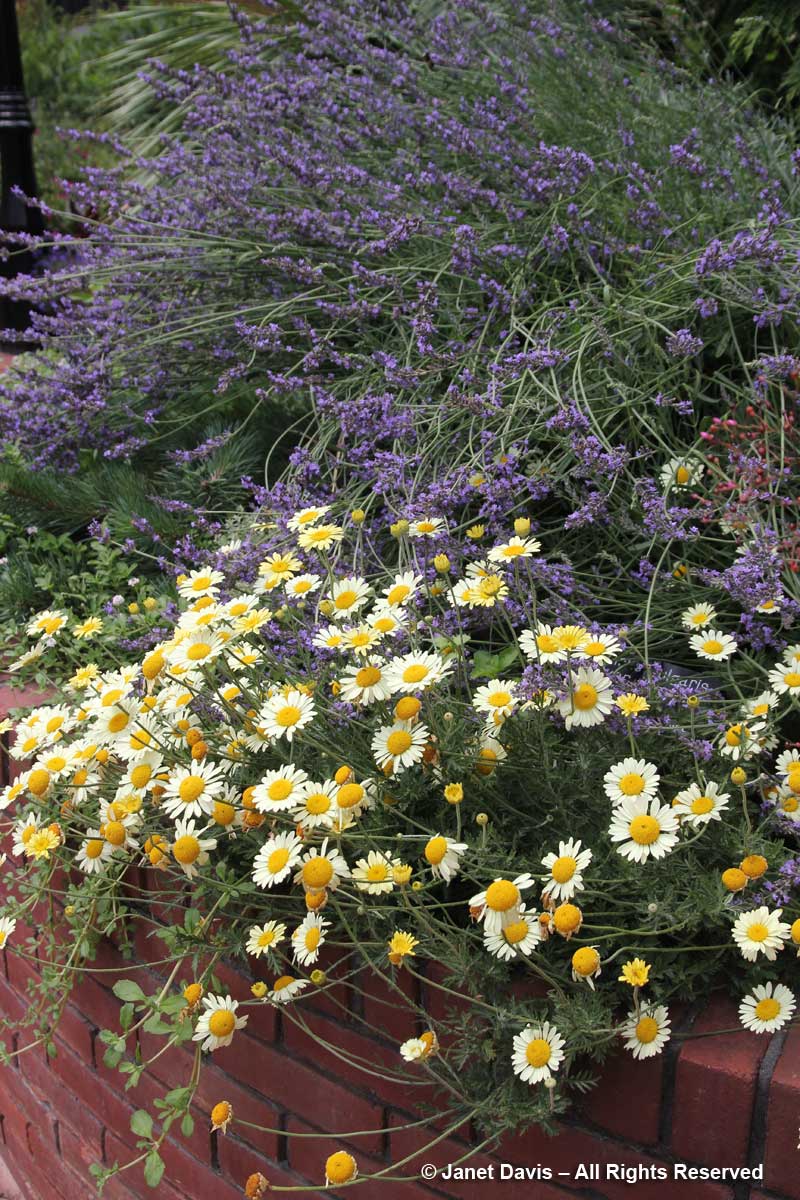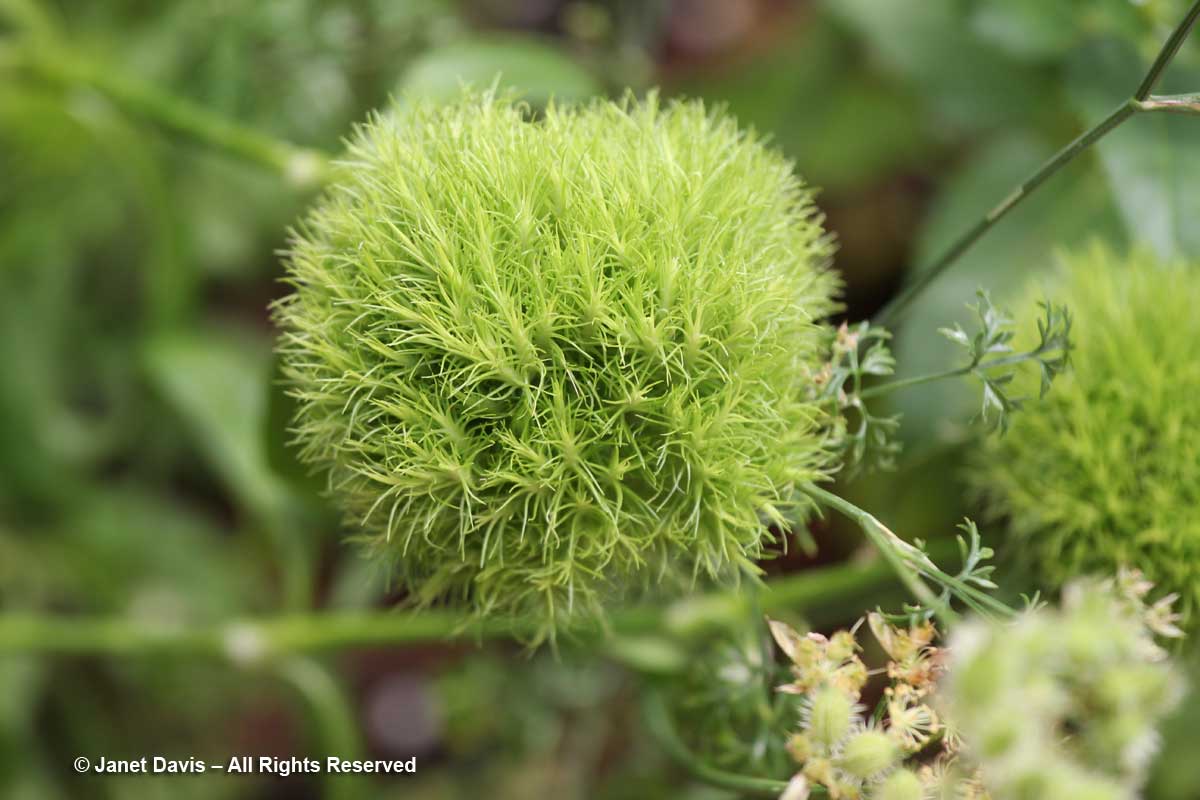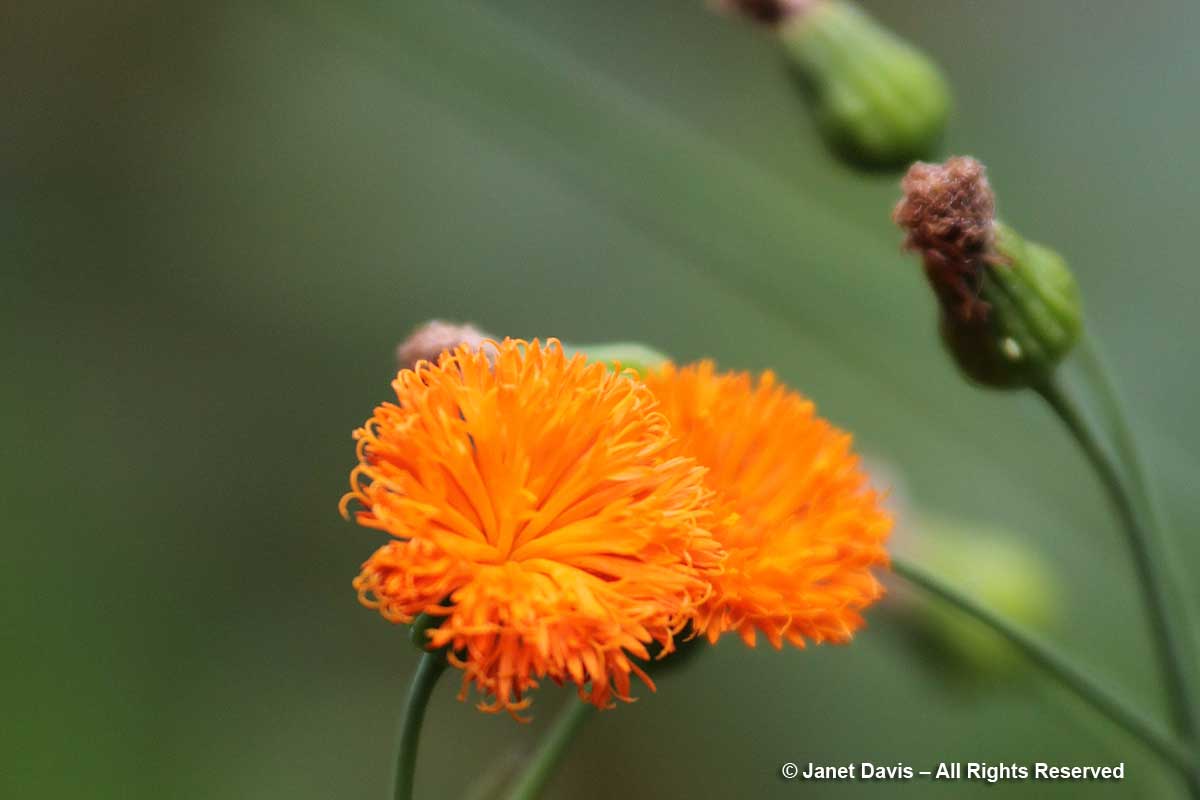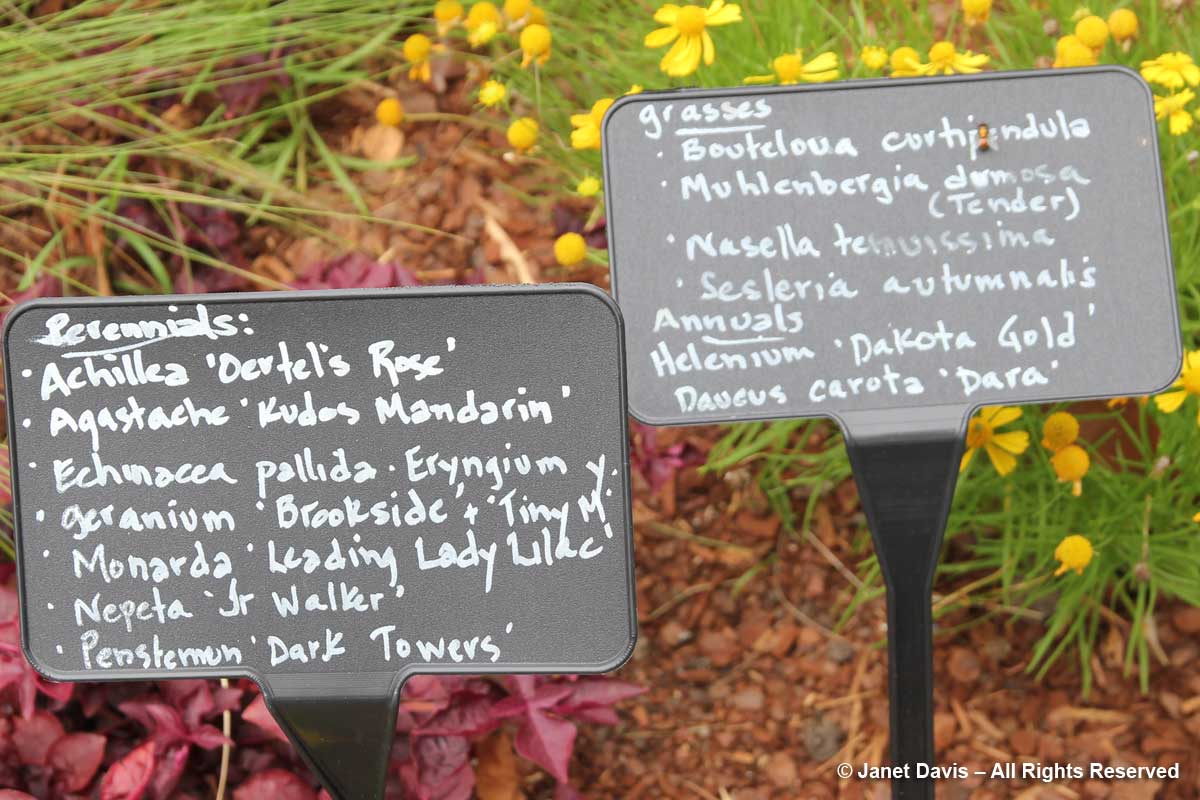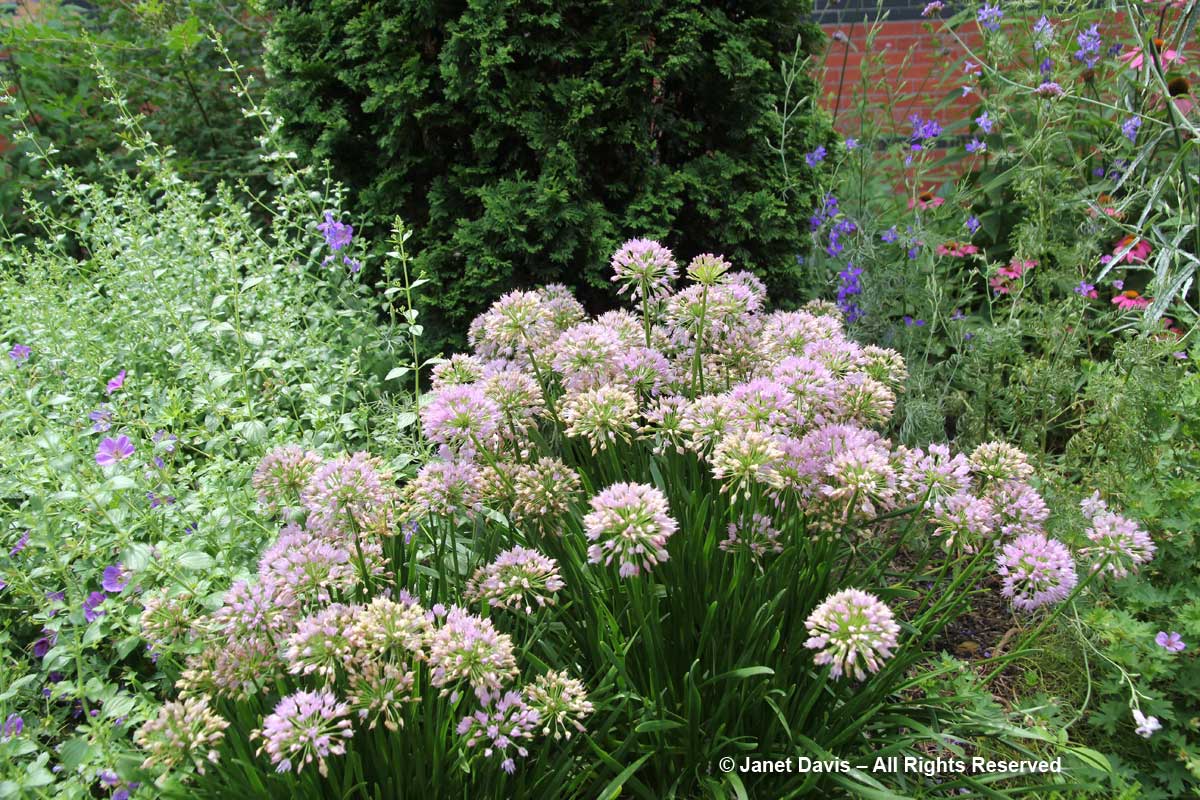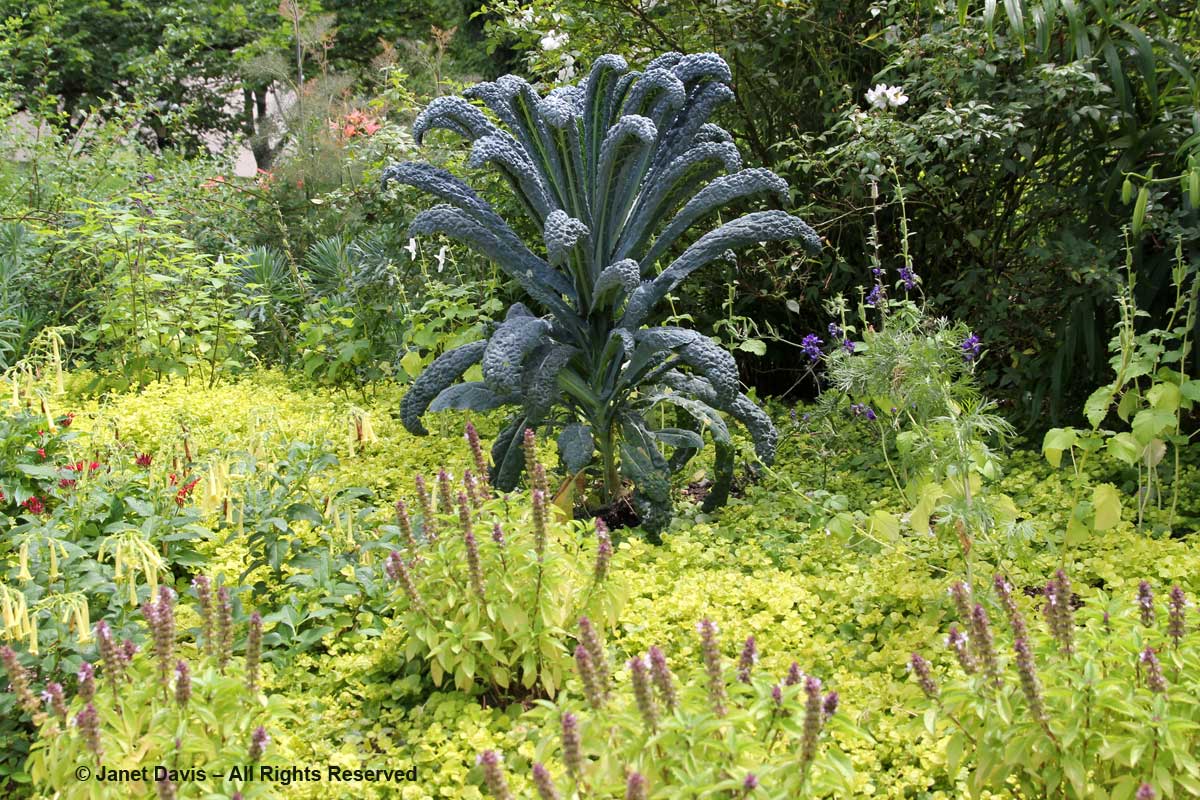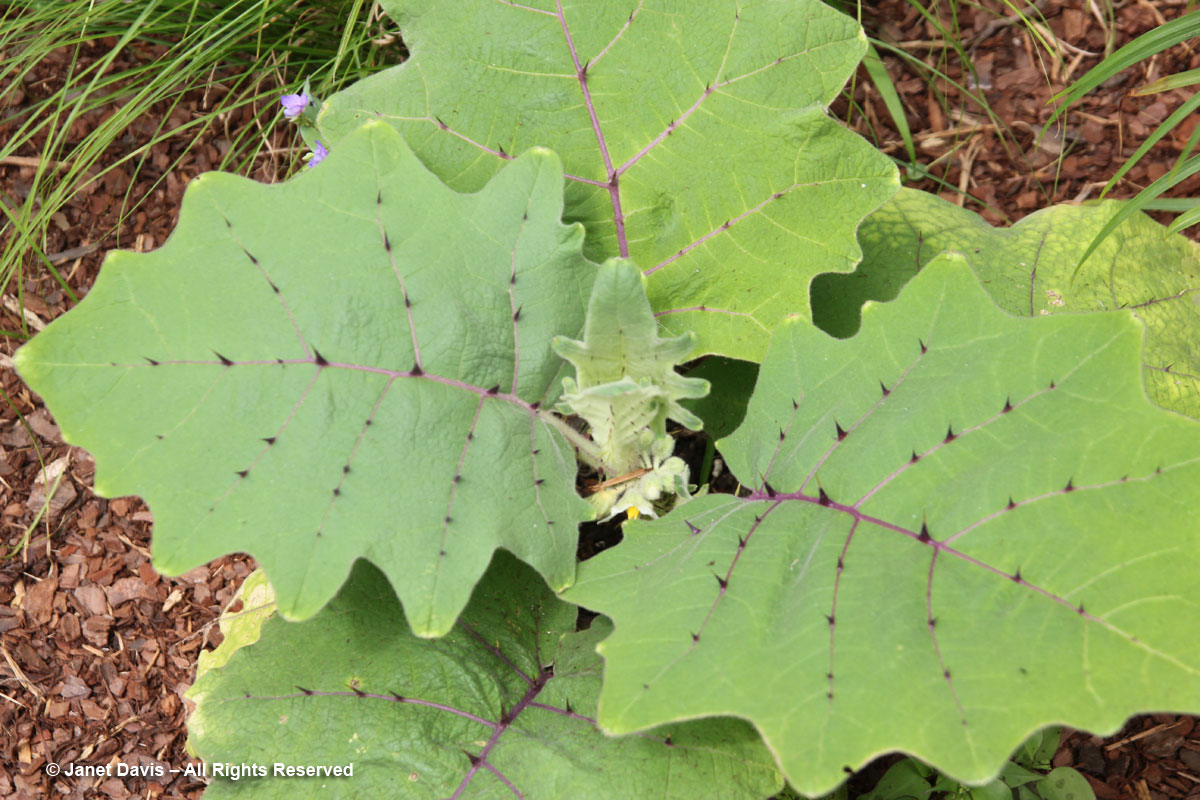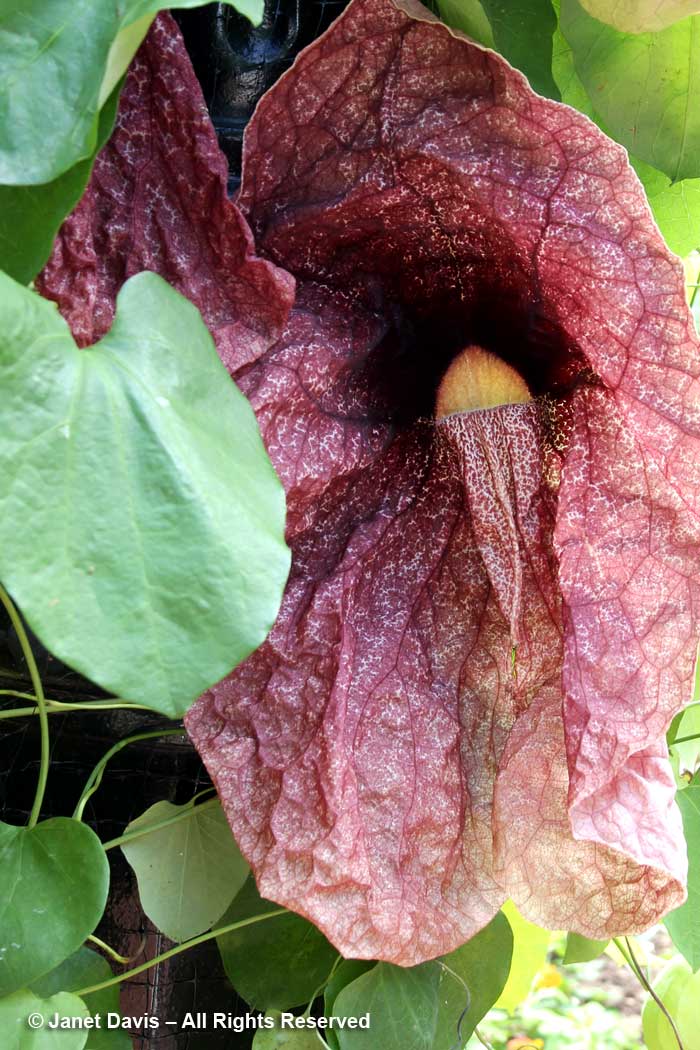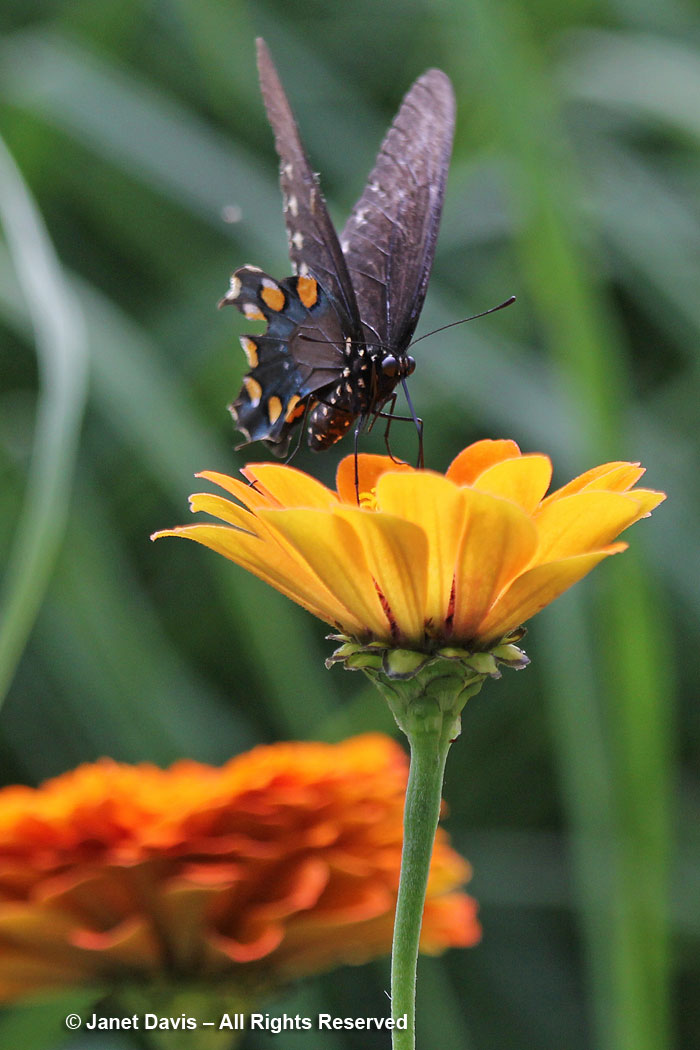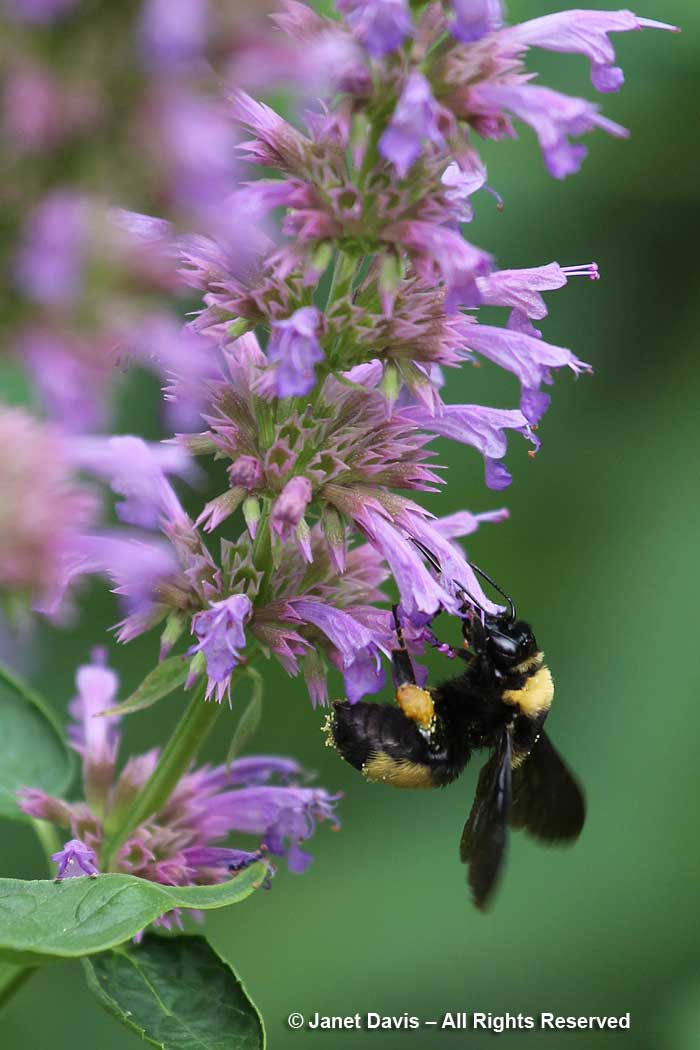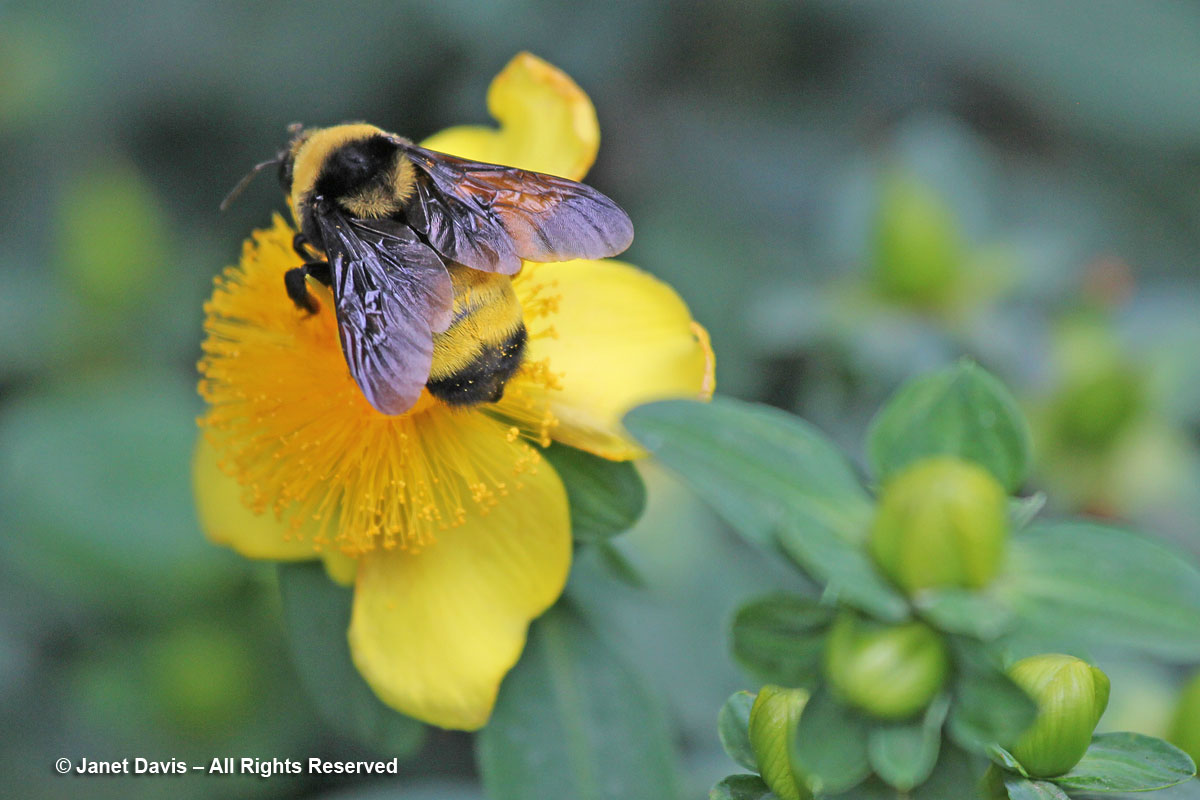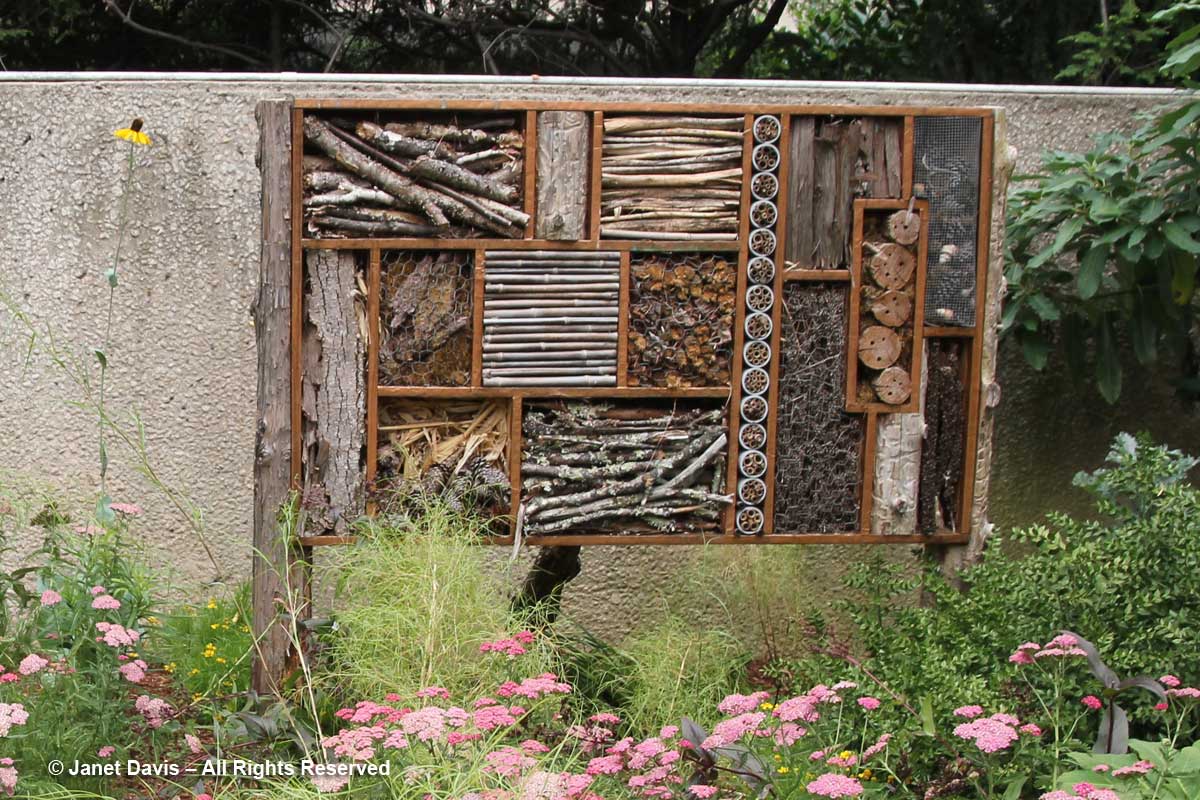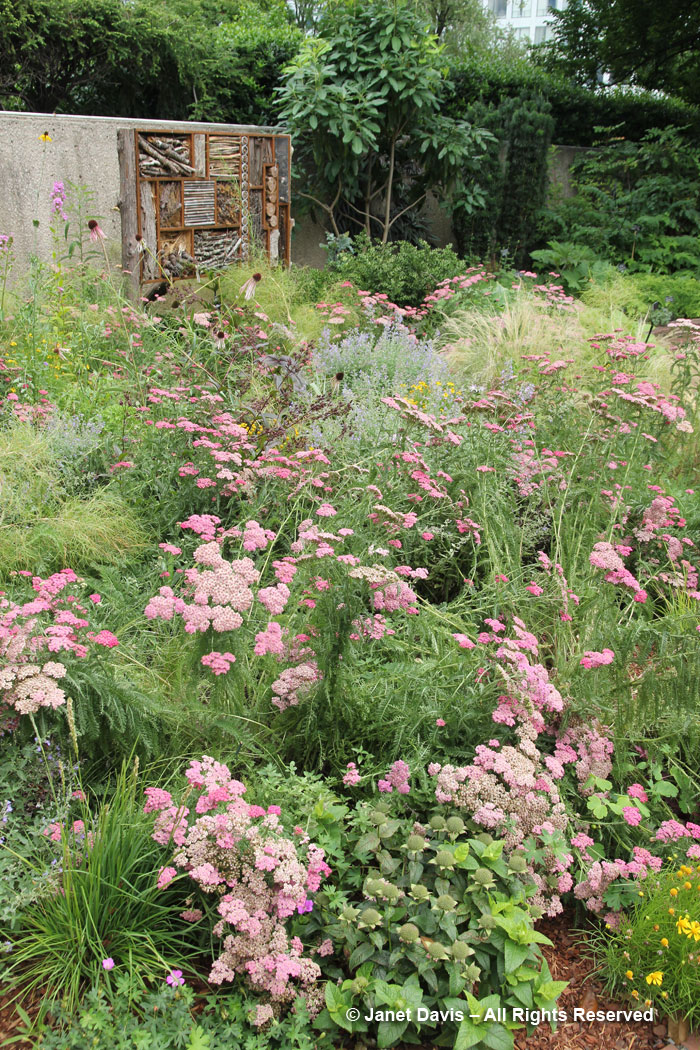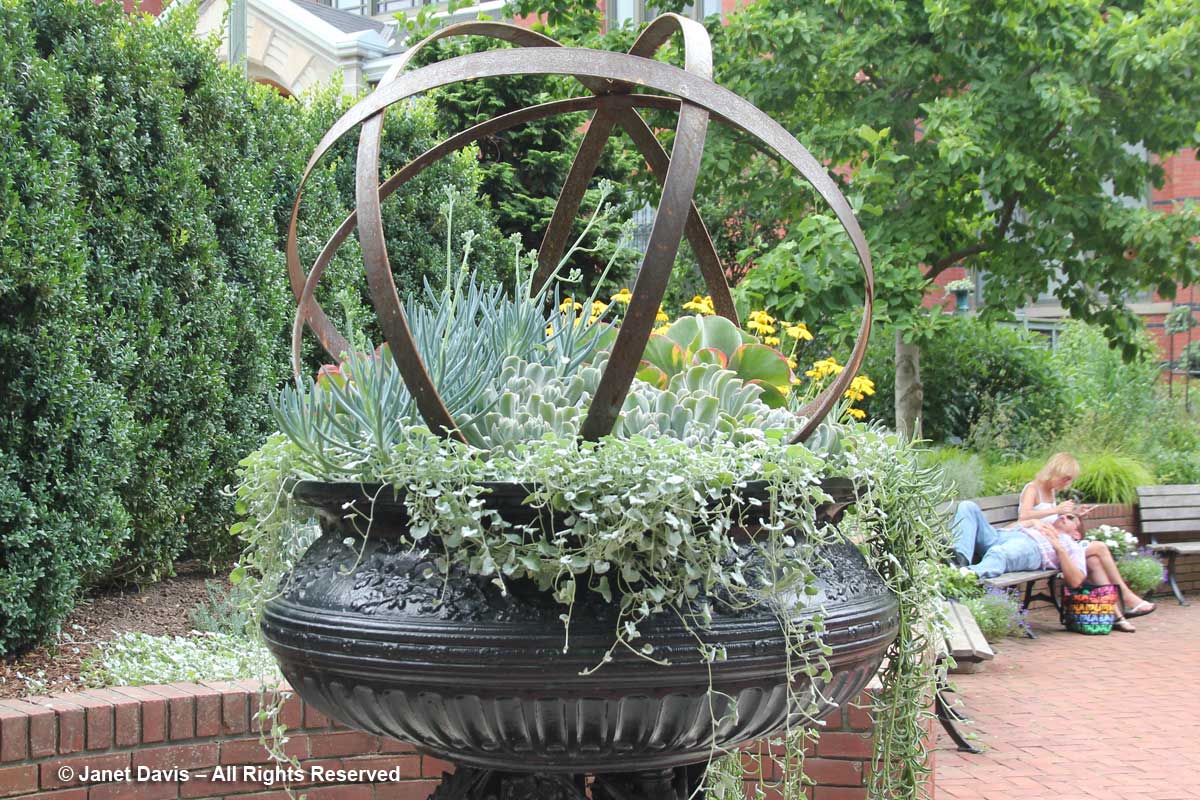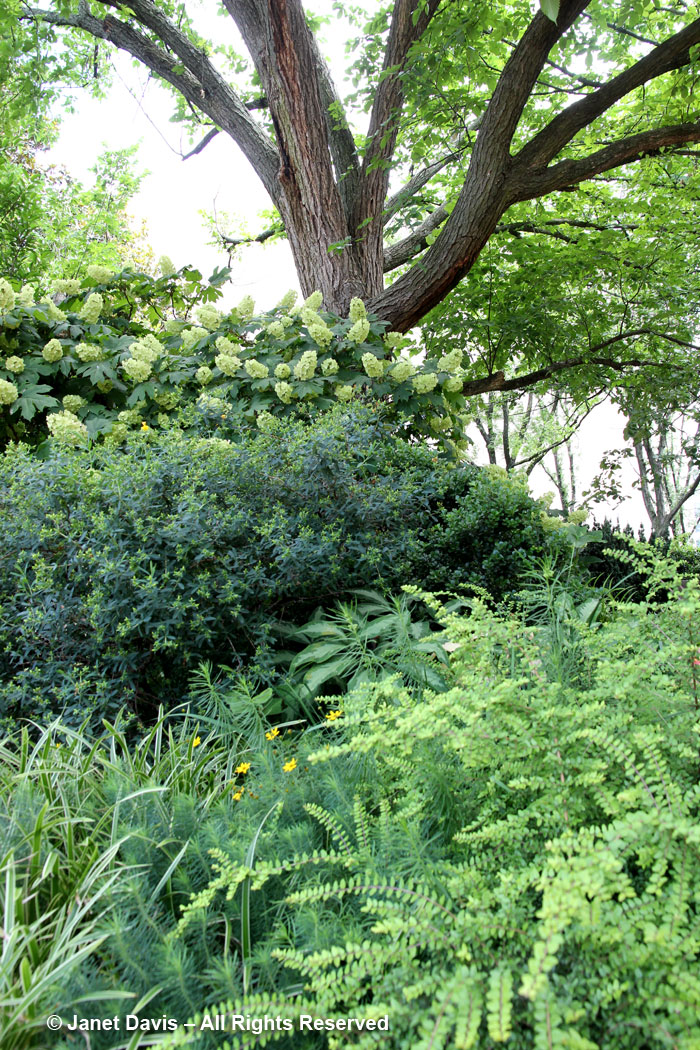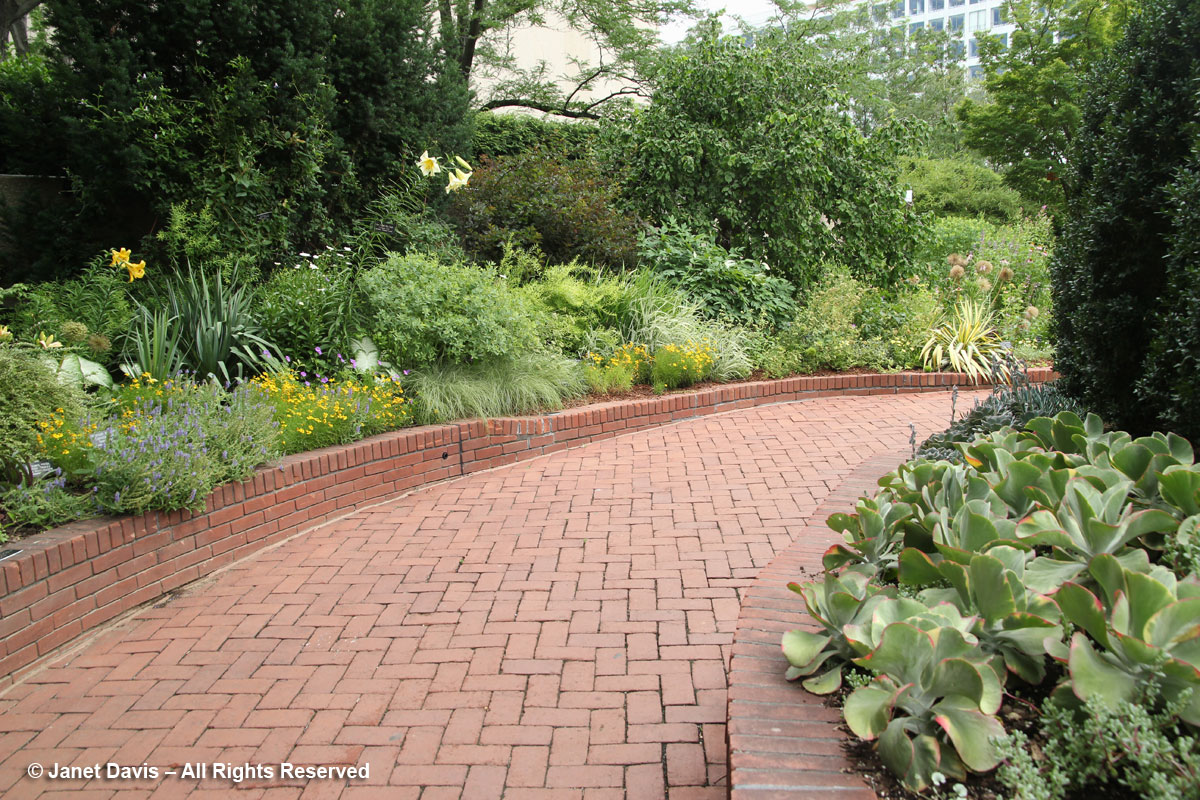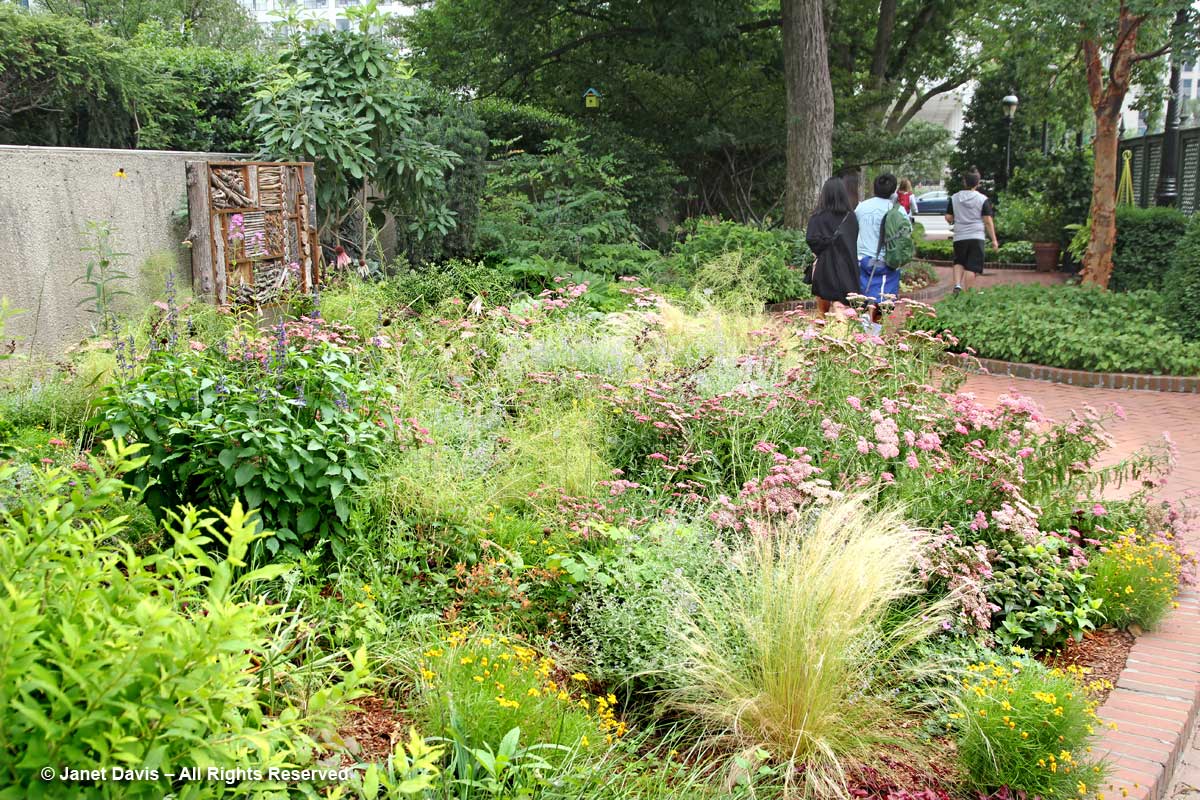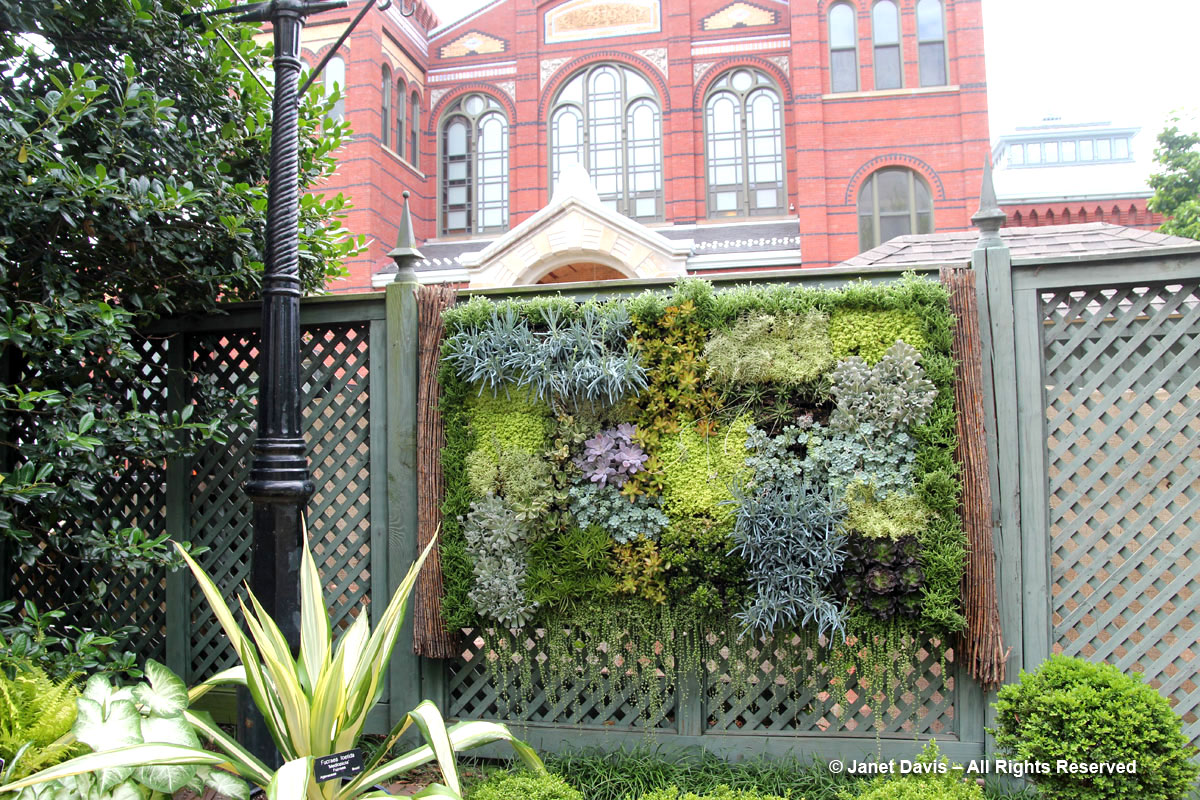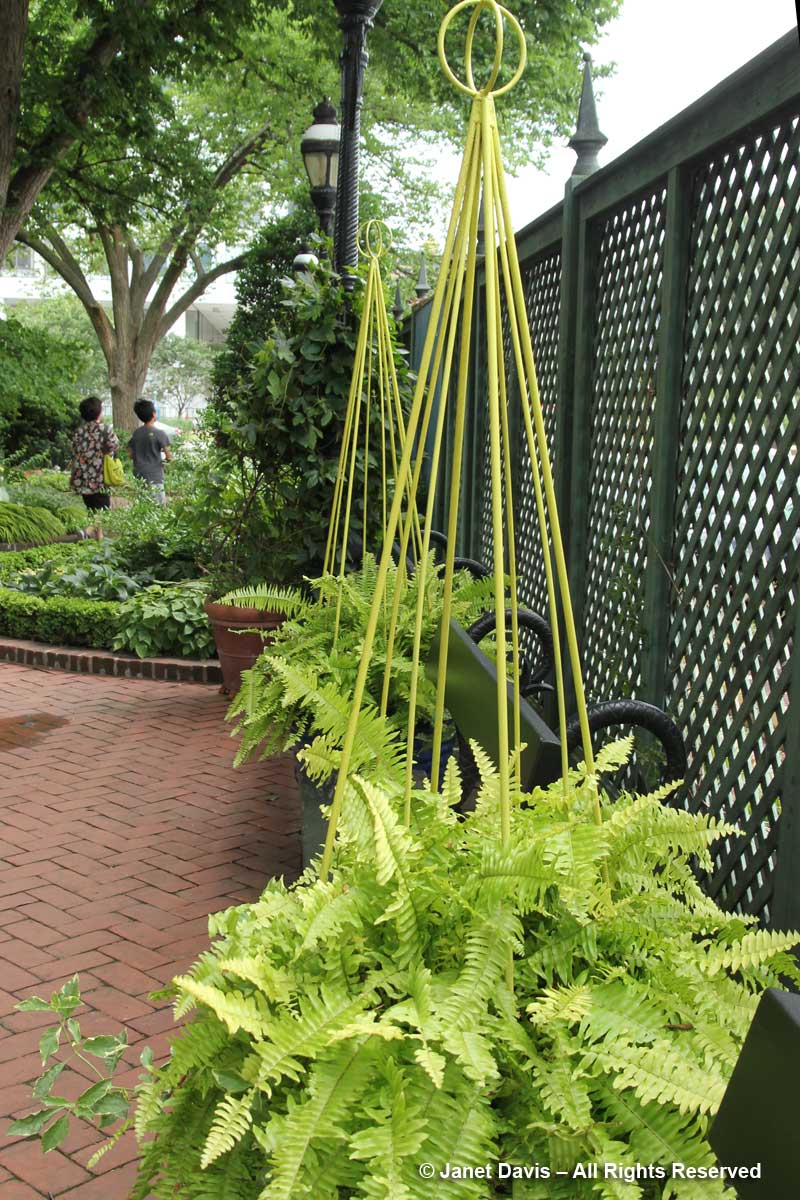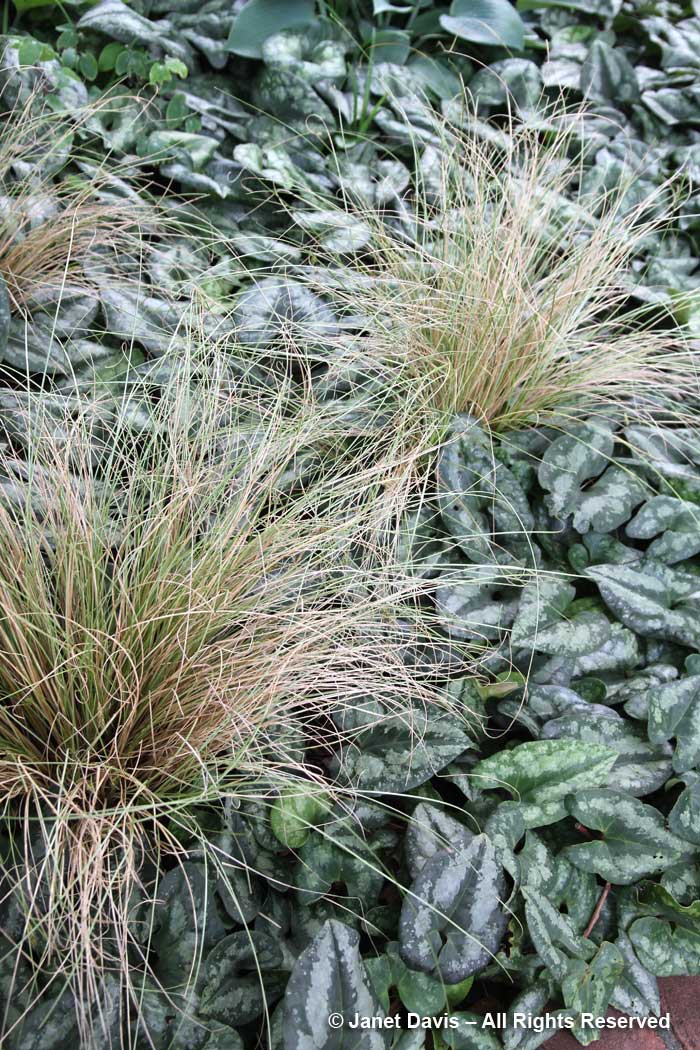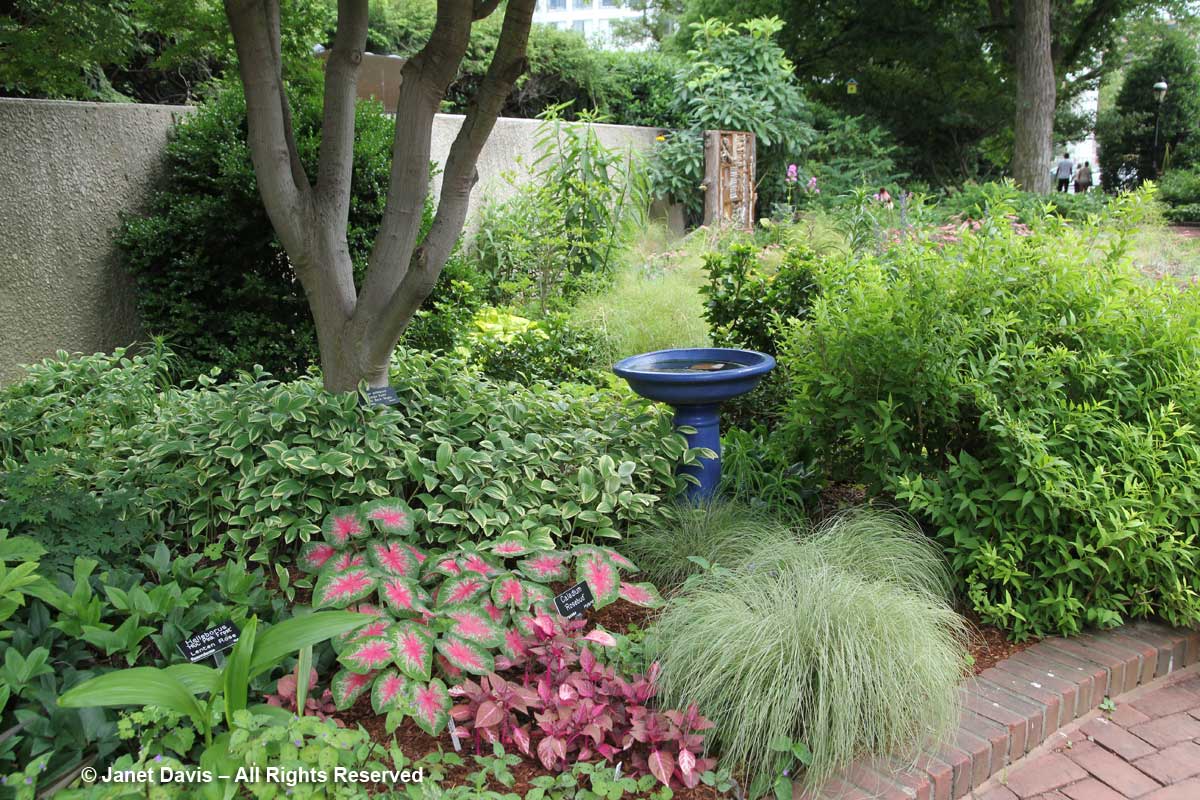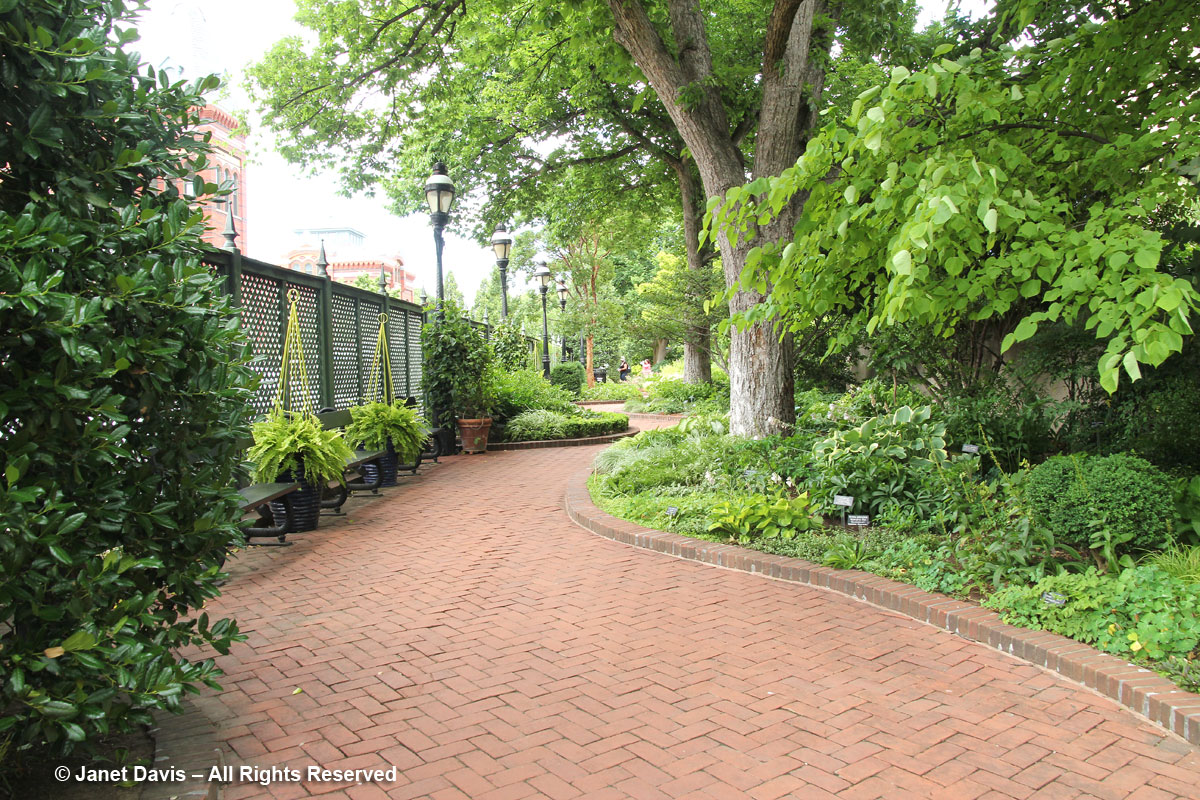Way back in mid-June, before the annual Bloggers’ Fling (with its wonderful garden tours) had begun in the DC region, my husband and I toured Washington’s beautiful Dumbarton Oaks as well as the National Mall, before driving south to see Thomas Jefferson’s Monticello in Charlottesville VA. The National Mall on a steamingly hot Sunday was impressive for first-time visitors, all 1.9 miles (3 kilometres) of it. We walked from the spectacular Lincoln Memorial at its west end….
…to the sobering Vietnam Veterans Memorial Wall nearby….
…and the World War II Memorial a little further on…..
…past the towering Washington Monument….
….and the White House northwest of the Mall at this point….
…all the way to the Capitol Building at the east end.
In the last half of the Mall you find the Smithsonian Institution, which owns eleven museums and galleries on the National Mall, including many gardens, but my favourite by far was the Mary Livingston Ripley Garden nestled between the historic Arts and Industries Building and the Hirshorn Museum. You can see it below in the context of the entire mall: my little red arrow points it out. (Click to open for the best view.)
As the Smithsonian explains on its website: “The Mary Livingston Ripley Garden was the inspiration of Mrs. S. Dillon Ripley, lifelong plant scholar-collector, active gardener, and wife of the Smithsonian Institution’s eighth Secretary. (They are shown together in the photo below, while on a trip to India.) Mrs. Ripley conceived the idea for a “fragrant garden” on the eastern border of the Arts and Industries Building – a location that was designated to become a parking lot. In 1978 Mrs. Ripley persuaded the Women’s Committee of the Smithsonian Associates, which she had founded in 1966, to support the garden. In 1988 the Women’s Committee recognized their founder and friend by naming the garden after her. In 1994, Mrs. John Clifford Folger of Washington, DC, and Palm Beach, Florida, initiated an endowment fund for the support and care of the garden in order that it might be preserved as it was first conceived by Mrs. Ripley. This thoughtful gift was given with the hope that others might add to the fund so that visitors would be able to enjoy the garden into the 21st century.”
So let’s take a tour of the Ripley. First of all, if I’d completed this blog back in the summer, as I intended to, I could not have introduced you to the new president of the Perennial Plant Association – and the woman who has been the Ripley Garden’s enthusiastic and education-focused gardener for almost 2 decades, Janet Draper. (And though I didn’t intentionally give her that poppy seedhead tiara, she is definitely royalty in the plant world of the northeast.)
That Janet is an obsessed plant geek becomes clear as soon as you enter the garden. Let’s start at the north entrance. See that elegant finial behind the orange flame flowers (Jacobinia chrystostephana), below? It reminded me of the Washington Monument down the mall, but Janet explained its provenance in the Smithsonian blog, and it has to do with the recently-completed renovation of the Smithsonian’s historic 1881 Arts and Industries Building.
The garden with its curvilinear walkways was designed in 1988 by architect Hugh Newell Jacobson. It was originally intended to be a sensory garden that would be accessible even to people in wheelchairs, so there are several raised, brick beds that put the captivating plant combinations at eye level. Behind, you can see the delightful Arts and Industries Building. Though its 12-year, $55 million renovation was completed in 2016, funding was not there to open it to the general public and it is currently only open for special events.
I loved Janet’s creative plant combinations, from this bronze carex with annual red gomphrena…
….to the pink poppy mallow (Callirhoe involucrata) peeking out through a cloud of Russian sage (Perovskia atriplicifolia)….
….to a luscious combination of alstroemerias with catmint (Nepeta x faassenii ‘Junior Walker) and ornamental grass.
Janet mixes desert species like spikey Yucca rostrata with tropicals, such as the big-leafed banana near the wall, and all grow happily in Washington’s long hot summer.
She uses old-fashioned combinations, such as fragrant lavender with anthemis ‘Susanna Mitchell’, below….
…. but also includes oddities like annual Dianthus ‘Green Ball’…..
……and unusual plants like scarlet tasseflower (Emilia coccinea), below.
By the way, unlike a lot of beautiful display gardens, Janet makes sure her visitors are not only wowed by the plants, but have the opportunity to learn their names as well.
Fittingly, as the new PPA president, she grows the Perennial Plant Association’s 2018 Plant of the Year, below, Allium ‘Millenium’. I grow this little onion (hybridized by my Facebook pal and allium breeder Mark McDonough) in my pollinator garden, and can testify to its hardiness and rugged nature.
There are little surprises like the Tuscan kale popping up in a sea of chartreuse anise hyssop (Agastache foeniculum ‘Golden Jubilee’)…..
….and conversation starters like Solanum quitoense, or naranjilla, which definitely discourages sensory contact!
One of the showiest plants in the Ripley garden is the tropical pipevine from Brazil (Aristolochia gigantea) with its big carrion-scented blossoms. Janet loves this plant and enjoys talking to visitors about it. If you read her blog about it, you’ll understand its relationship to the American native pipevine (A. macrophylla), which is a massive vine – too big for the Ripley – but a larval plant of the pipevine swallowtail butterfly (the giant Brazilian plant is not).
But after doing some sleuthing, Janet discovered another small pipevine, Aristolochia fimbriata, that does feed the larval butterflies, and she grows it now. Thus I was delighted to see a rather tattered, elderly pipevine swallowtail taking a break from egg-laying to nectar on zinnias in an orange-themed raised bed.
Speaking of insects – and as a bumble bee photographer, – I was overjoyed to spot a local bee I’d never seen before, the black-and-gold bumble bee (Bombus auricomis) nectaring on anise hyssop (Agastache)…
….and cedarglade St. Johnswort (Hypericum frondosum).
Bumble bees make their own nests, of course, but there was also a lovely hotel for native bees in the garden.
Incidentally, that bed in front of the bee structure perfectly illustrates Janet’s deft touch, not merely with plant collecting, but with lovely design, too. Look how all that pink Achillea ‘Oertel’s Rose’ draws the eye through the scene.
Though the garden has its share of hot, sunny sites perfect for succulents (and drowsy visitors)….
…it also has beautiful shady spots, too. That’s ‘Alice’ oakleaf hydrangea (H. quercifolia) way up on top.
Look at the subtle way the brick retaining wall becomes lower at this point, and how the use of the same bricks for path and wall creates a seamless journey.
Walking toward the shady end of the garden….
….you pass the beautifully textural living wall on the right. A miniature version of some of the building-sized living walls that have become popular in recent years, it is composed of plants whose texture and colours create a living painting. In this blog, Janet explains the nuts and bolts of her first attempt, and in a second blog three years later, she expands on the process with succulents and talks about other fun ideas with topiary.
If other visitors are anything like me, they’ll want to take a rest in the shade after walking the mall on a hot summer day. And how lovely is this resting spot, with its chartreuse obelisk-decked planters flanking it?
Once again, we see Janet’s plant combination skills, with this ‘Frosted Curls’ carex punctuating a bed of luscious Asarum splendens.
Look at this spectacular border: who said there aren’t a lot of plants for shady areas?
Gazing back under the old American elms (they had been there for decades when Hugh Jacobson designed the raised beds around them), I felt that I could have spent hours in the Ripley Garden, marvelling at plant combinations and chatting with Janet Draper. But the United States Botanic Garden beckoned and it was still a good walk east towards the Capitol building. Reluctantly, I headed out into the heat and crowds of the National Mall.

